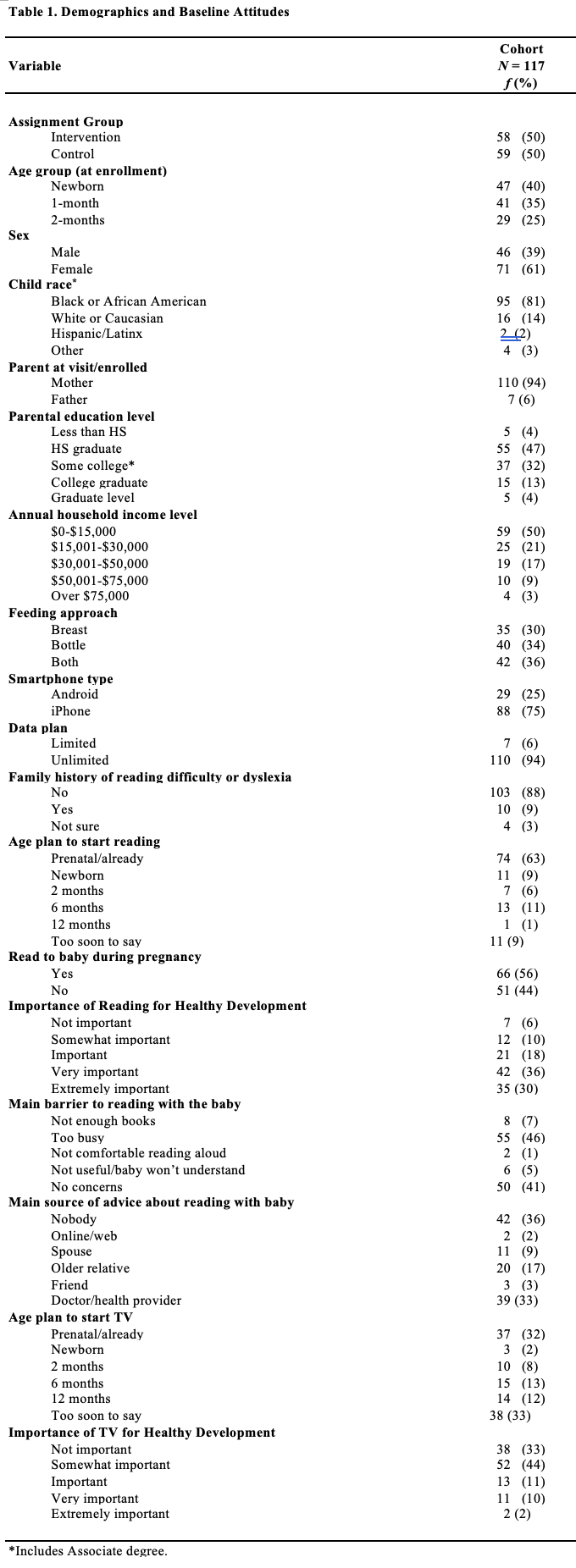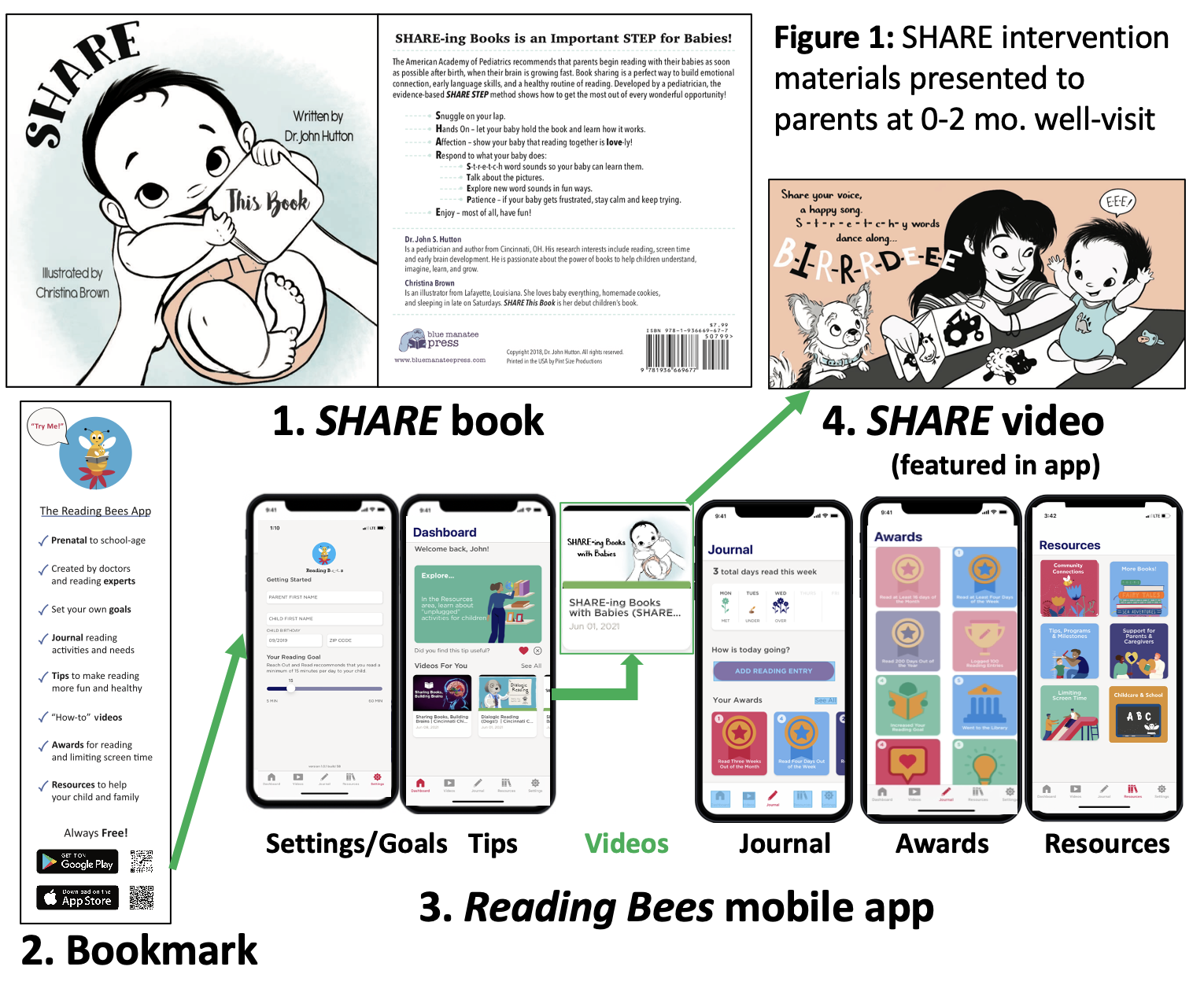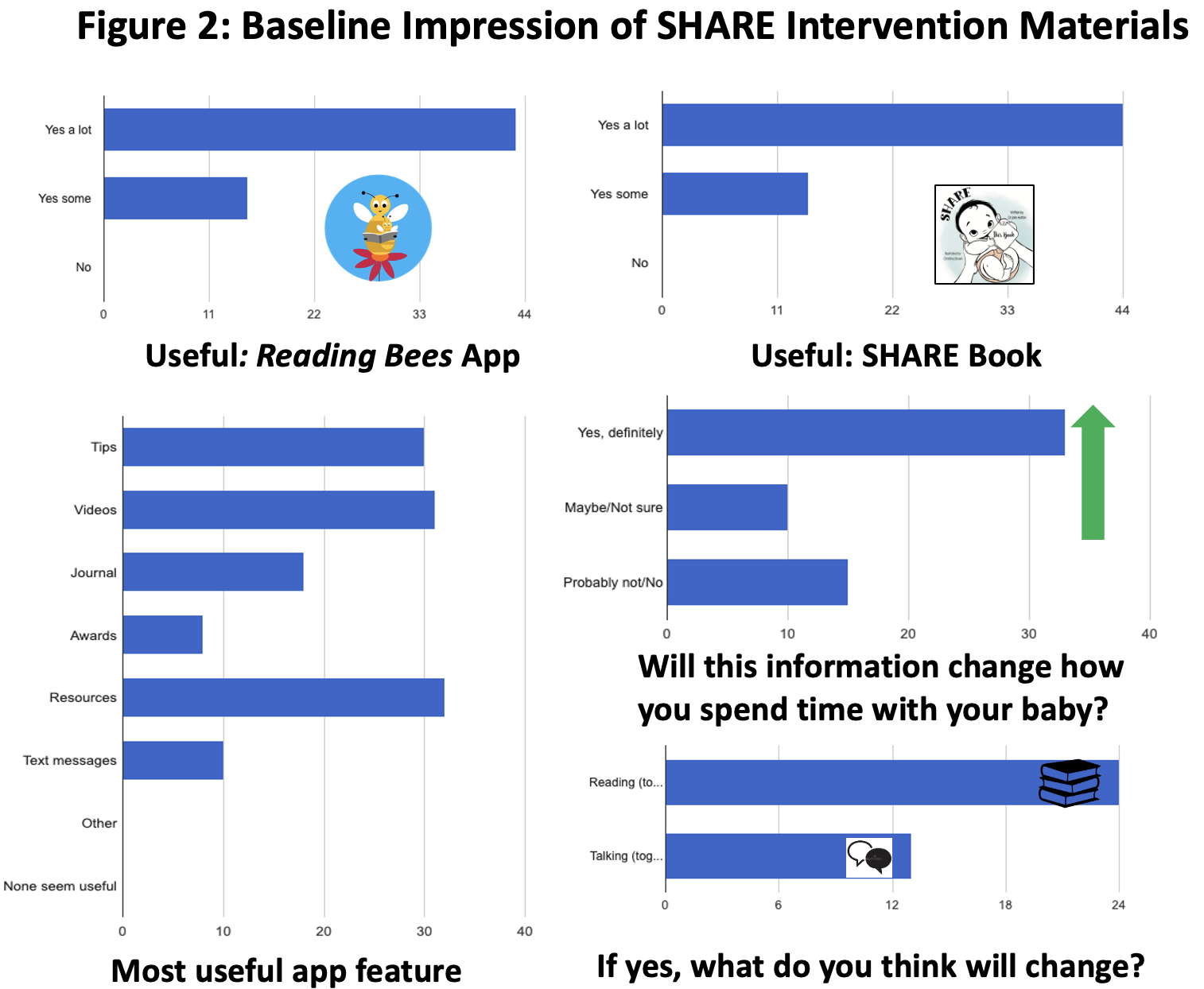General Pediatrics: Primary Care/Prevention
General Pediatrics 2
117 - Enhanced Reading Guidance for Parents of Infants During Primary Care: Preliminary Data from a Clinical Trial
Publication Number: 117.115

John S. Hutton, MS MS (he/him/his)
Assistant Professor
Cincinnati Children's Hospital Medical Center
Cincinnati, Ohio, United States
Presenting Author(s)
Background:
Infancy is a time of rapid brain, cognitive and relational development. An infant’s home literacy environment (HLE) can be highly impactful. The AAP recommends shared reading beginning in infancy, reinforced by programs such as Reach Out and Read (ROR). To address inequities in HLE, it is vital to target guidance and resources to needs, which can be difficult at clinic visits.
Objective:
To provide baseline data from a trial (NCT05508282) comparing enhanced reading guidance (book+app) vs. usual ROR provided at well-visits between 0- and 2-months old.
Design/Methods: The intervention involves a children’s book and videos featured in a new mobile app, Reading Bees (Figure 1). These model SHARE/STEP, an evidence-based approach intended to enrich parent-infant reading. The app also encourages the parent to set goals and log reading, and provides tips, awards and resources.
This trial is based at primary care clinics where ROR is customary. Enrollment is at usual well-visits. Inclusion: gestation >34 weeks, age 0-2 months, no developmental disorder, fluent in English. Families are randomized to Intervention or Control using a REDCap list. All aspects are via research coordinators.
Baseline data includes demographics and attitudes towards reading and TV. Intervention parents are presented with the book and app (Figure 1), then an impression survey. Presentation time and barriers are recorded. Both groups receive usual ROR from their provider.
Results: As of 12/26/22, 117 dyads were enrolled (58 Intervention, 59 Control). Demographics and attitudes/plans regarding reading and TV are in Table 1. 94%/67% reported reading/TV as at least Somewhat Important for healthy development (30%/2% Extremely), most often for Brain Development.
Mean time for intervention (review book, install/review app) was 3.7 minutes (+1.2; 2-7.5). A majority (59%) had no barriers to app/video loading, others involving sibling using phone (7%), refusal (7%), dead battery (5%), visit flow (5%), clinic WiFi (5%) and technical glitches with an early version (12%).
Impression of intervention materials were strongly positive (Figure 2). All planned to read the book with the baby and 96% to watch the video. All expected the book and app to be useful and that the information would influence time spent with the baby. Most useful features of the app were Resources (55%) and Videos/Tips (53%).
Conclusion(s): Preliminary data suggests that the SHARE book/app intervention is feasible at well-visits and well-received by parents from disadvantaged backgrounds. Longitudinal data through 12-mos old will quantify use and efficacy versus usual ROR.


